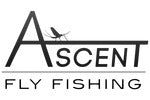
Euro Nymphing Part 3: How to Build a Euro Leader

Its time to kick off part 3 of our Euro nymphing series with an in depth look at euro nymphing leaders. The first thing you need to do when approaching the topic of Euro leaders is mentally place them in a different category of gear than your standard, tapered monofilament and fluorocarbon leaders. Your store-bought tapered leader is inexpensive and disposable; we use them, trim them down, break them off, and replace them. Euro leaders on the other hand are an investment of time and materials, with butt sections made from high test material (20 lb. to 12 lb.) that can last an entire season of heavy fishing. While several companies produce quality Euro leaders that will get you on the water, making your own leaders allows you to incorporate some next level tech material, have greater versatility, and be able to fine tune your leader for your particular waters. In this article we’re going to provide step by step instructions on how to make your own competition quality euro leader.
Diagram of a Complete Euro Leader with Knots

Building the Butt Section

The name of the game when crafting the butt section of your euro leader is make it heavy, make it durable, and make it invisible to trout. To accomplish this, we recommend using Maxima Chameleon leader material in 20 lb., 15 lb., and 12 lb. test. Maxima Chameleon leader is crafted from a non-reflective, hue changing, brown material that is essentially invisible to trout as it drifts through their aquatic world. Building the butt section from this stiff 20 lb. to 12 lb. test material will give us enough weight to fully turn over heavy tungsten bead headed nymphs while providing exceptional abrasion resistance and leader life. After cutting a 42” section each of Maxima Chameleon 20 lb., 15 lb., and 12 lb. and then give the a short, steady stretch to remove the looped memory from the material. Then, using blood knots to attach one end of the 20 lb. section to the 15 lb., and the other end of the 15 lb. section to the 12 lb. section, trim all of the tag ends flush on each knot.
Building the Sighter Section
The next section that we need to build before attaching it to the butt section is the Sighter, which is a brightly colored section that will enable you to gauge fly depth and subtle takes by trout. Sighter material can be bought on spools or in packs, and our favorites come in a bi-color of fluorescent yellow, orange, or pink. Cut a 14” to 20” section of 3x sighter material (continuing our leader taper), give it a steady stretch to remove the loop memory, and then attach it to the 12 lb. test end of your butt section using a blood knot. While you will want to cut the tag end of the 12 lb. maxima flush with the knot, you will want to leave a 1” – 2” tag of your sighter at this and every other sighter knot. These bright tags will help you track your drift, depth, and strikes. Next, cut the sighter in the middle before reattaching the sections with a blood knot, leaving both tags untrimmed. Finally, using a uni or clinch knot, attach a 2mm tippet ring to the end of your sighter (leaving a 1” – 2” tag).
This section of leader, from the tip of the 20 lb. Maxima to the tippet ring on the end of the sighter is the foundation of your euro leader. From this point you will add tippet and flies, adjusting tippet length for depth and flies for the water or hatch, but this foundational leader will remain to be used again, and again.
Building the Terminal Section
From the tippet ring we will be adding 3’ to 6’ of 4x fluorocarbon tippet (preferably Ascent Fly Fishing Phantom Fluorocarbon Tippet) depending on the depth of the water we are fishing and we will attach it using a uni or clinch knot, and then trimming off the tag. Finally, cut off a 20” – 24” section of 5x fluorocarbon tippet and attach it to approximately 10” from the end of your 4x tippet using a triple surgeons knot and trimming the tag end of the 5x pointing towards the sighter. When properly tied, you should have a 10” tag of 4x tippet extending off of your last knot, and approximately 18” – 22” of 5x tippet extending below the knot. From the 10” tag of 4x tippet you will attach your dropper fly, and from the 20” section of 5x tippet you will add your heavy, terminal fly.
It takes some time and a small investment in leader material, but building your euro leaders according to this formula will set you up for success while allowing you to grow in your euro nymphing game!
FOM
Pattern: Batman Nymph
Sizes: 6 – 12
Made from the stuff of trout nightmares, the Batman Nymph will dive into the darkest pools in the river to bring trout to justice…well, if not justice at least to your landing net. Named for its black and purple color, black soft-hackle cape that flows and flaps in the current, and purple rubber legs, this super versatile nymph pattern can get the job done anytime and anywhere! This pattern can be effectively fished as a mayfly nymph, stonefly nymph, dragon Fly larva, or hellgrammite just by changing the size of the pattern.
Dry/Wet: Wet
Fly Category: Attractor Pattern
Family: Mayflies, Stoneflies
Species: NA
Life Stage: Nymph





